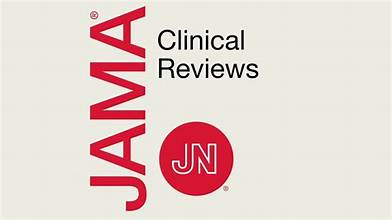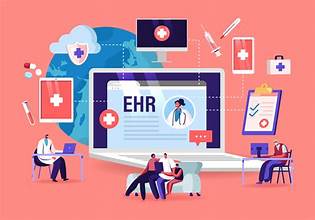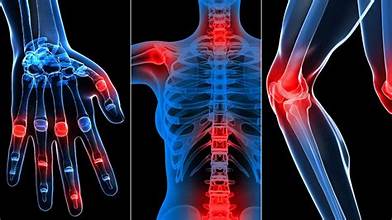What is a Medical Loan?
A medical loan is a type of unsecured personal loan designed to help individuals pay for healthcare expenses that may not be fully covered by insurance. Since it is unsecured, you don’t need to put up collateral (such as a house or car) to qualify. Instead, lenders evaluate factors like your credit score, income, and repayment history to decide your eligibility and interest rate.
Medical loans usually come with fixed interest rates and repayment terms that range from two to seven years, depending on the lender and the borrower’s profile. They can be obtained through banks, online lenders, or credit unions, though interest rates and loan features vary widely.
What Can Medical Loans Be Used for?
These loans can cover a wide variety of medical costs, including but not limited to:
- Emergency room bills and urgent care visits
- High insurance deductibles or copayments
- Out-of-network medical charges
- Dental procedures (such as braces, implants, or root canals)
- Cosmetic and elective surgeries
- Vision care, such as LASIK surgery
- Fertility treatments like IVF
- Gender-affirming procedures
- Long-term therapies (physical, occupational, or mental health)
- Specialized treatments not covered by standard insurance
Why Consider a Medical Loan?
Medical loans can provide quick access to funds when healthcare expenses arise unexpectedly. They may be a better alternative to high-interest credit cards or medical financing plans, especially if you qualify for a loan with a lower interest rate. However, it’s important to compare lenders, review repayment terms carefully, and ensure the loan fits within your budget before committing.
Advantages and Disadvantages of Medical Loans:
Benefits:
- Medical loans can help pay for both planned and unplanned healthcare expenses, from routine treatments to emergency procedures.
- Many online lenders provide quick applications, same-day approval, and fast access to funds.
- If you qualify for a competitive interest rate, a medical loan can also be used to combine multiple medical bills into a single monthly payment, making debt easier to manage.
Drawbacks:
- The lowest interest rates are typically offered only to borrowers with strong credit histories, which may limit accessibility for some.
- Certain lenders charge additional costs, such as origination or processing fees, which increase the total amount you repay.
- Interest rates can sometimes be higher than alternative financing options, such as payment plans offered directly by hospitals or healthcare providers.
Steps to Apply for a Medical Loan:
Getting a medical loan follows a process similar to applying for any other personal loan. Here’s how it generally works:
- Check Your Credit Score:
Your credit score plays a major role in whether you qualify, how much you can borrow, and the interest rate you’ll receive. Knowing your score beforehand helps you set realistic expectations. - Assess Your Budget:
Calculate how much you need to borrow and use a loan calculator to estimate monthly payments. Make sure the repayment schedule will fit comfortably within your income and expenses. - Compare Lenders and Pre-Qualify:
Many lenders allow you to pre-qualify, which shows you estimated loan terms such as interest rate, repayment length, and monthly payment without affecting your credit score. Review offers from different banks, credit unions, and online lenders to find the best fit. - Submit Your Application:After selecting a lender, complete the official loan application. Once approved, the funds are typically deposited directly into your bank account, often within a few business days.
Key Factors to Evaluate Before Taking a Medical Loan:
When choosing the right medical loan, consider the following points carefully:
- Annual Percentage Rate (APR):
The APR shows the true cost of borrowing by including both interest and fees. Personal loan APRs usually range between 6% and 36%. Lower APRs save you money, but they’re often only available to borrowers with very strong credit scores. - Origination Fees:
Some lenders charge a processing fee typically 1% to 10% of the loan amount. This fee is usually subtracted before you receive your funds. For example, on a $5,000 loan with a 3% fee, you’d get $4,850 after the $150 fee is deducted. - Repayment Term:
Loan terms determine how long you have to pay back the money. A longer term means smaller monthly payments but more interest paid over the life of the loan. A shorter term reduces overall costs but comes with higher monthly payments. - Approval and Funding Speed:
For urgent medical needs, look for lenders that offer quick approval and fast access to funds. Some online lenders can release money the same day you’re approved.
Getting a Medical Loan with Poor Credit:
Borrowers with fair or poor credit (usually a score of 689 or below) often face higher interest rates on medical loans. This can make repayment far more expensive over time. For example, a $5,000 loan spread over five years at a 21.99% APR would add about $3,284 in interest. If that same loan carried a 35.99% APR, the interest alone would reach $5,838 more than the amount originally borrowed. Financial advisors typically recommend avoiding loans with interest rates above 36%.
If your credit score is on the lower side, here are some steps you can take to improve your chances of securing a better loan:
- Check Your Credit Report:Review it carefully for mistakes, such as accounts that don’t belong to you or incorrect credit limits, and dispute any errors you find.
- Consider a Co-Signer: Having someone with stronger credit co-sign your loan could increase your approval odds and possibly lower your interest rate. However, the co-signer is equally responsible if you miss payments.
- Pre-Qualify First: Many lenders allow pre-qualification with only a soft credit check. This lets you see potential rates and terms without hurting your score, helping you identify the best loan options before applying officially.
Who Can Apply for a Medical Loan?
Eligibility for a medical loan depends largely on your credit profile, income, and the lender’s specific requirements. While criteria vary, most lenders generally review the following factors before approving an application:
Income Level: Some lenders may require proof of a minimum monthly or annual income, while others simply ensure you have enough income left after existing obligations (like rent, student loans, or mortgages) to manage new loan payments. Typically, higher income and lower debt can improve your chances of approval and allow you to borrow a larger amount.
Credit Score: A strong credit score often results in better loan offers with lower interest rates, helping you save money over time. On the other hand, applicants with poor or limited credit history may still qualify but usually face higher interest costs.
Credit Report History: Lenders may review your credit report for red flags, such as missed payments, defaults, or accounts in collections. While these issues don’t always disqualify you, they can affect the loan terms you’re offered.
Loan Request & Terms: The loan amount you’re applying for and the repayment period also influence your eligibility. Larger loans or longer repayment terms might come with higher interest rates, while smaller, shorter-term loans may be easier to qualify for.






